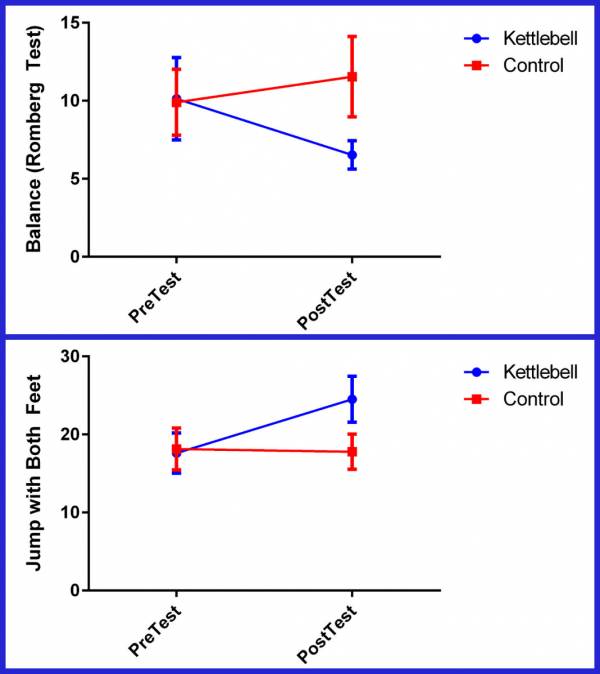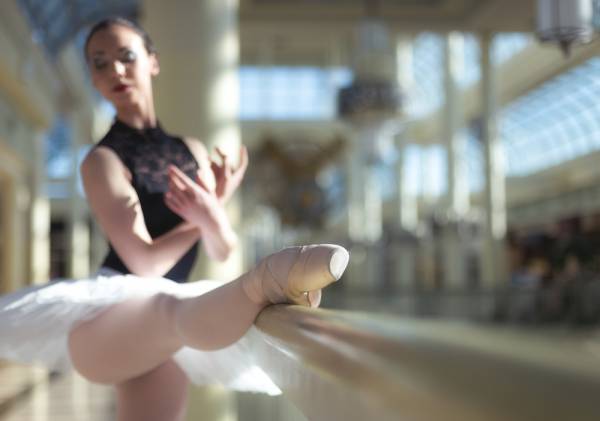Researchers from the University of Padua in Italy will soon present their recent research with ballet dancers who followed a basic kettlebell protocol for three months. We have an advance look at what they found.
Most Pulse Beat Fit readers are not interested in becoming better at ballet. However, these recent findings might impact your sports performance. Ballet dancers had better balance and leaping ability after completing this simple kettlebell program.
The Method
The researchers divided a group of advanced ballet dancers into two groups. One group trained with the usual ballet jump training. The other group replaced the traditional jump training with a kettlebell protocol based on Pavel Tsatsouline’s book, Simple and Sinister. They were trained how to use the kettlebell by StrongFirst kettlebell instructors.
This is the protocol that they completed for three months:
- 20 one handed swings every minute on the minute for 5 minutes (10 with each hand).
- Rest one minute.
- Turkish get ups, alternating hands every minute on the minute for 10 minutes.
“In my eye, much of the benefit occurs because you have to reverse the velocity of a heavy weight as it hits the bottom of the [kettlebell] swing.”
What They Measured
- Balance – The researchers used an Argo Stabilometric platform to measure balance. This machine is used to gauge how much a person sways back and forth and how quickly. In general, we are always fine-tuning our balance as we stand. Dancers were tested while standing on one foot with their eyes shut.
- Jumping – The researchers used an optical system to test how high the dancers could jump and how long they contacted the ground. Optical analysis can measure differences in jumps to the thousandths of a second. Ballet dancers need to be able to jump without a big counterbalance movement. A ballet dancer swinging her arms to generate jump is not as elegant. Thus, the dancer jumps from an upright position, then lands and jumps right back in the air.
- Heart Rate – The researchers measured heart rate and blood pressure to determine conditioning differences between the groups.
What They Found
As seen in the two figures below, the researchers found improvements in balance and jumps for the kettlebell training group of dancers, while the control group remained the same. Resting heart rate also improved for the kettlebell training group.

What the Research Means For You
One of the more interesting findings in this article is that balance improved. Ballet dancers would seem to already have great balance. Improving beyond their baseline is an impressive finding. Vertical leap increases have been shown in previous research. This study offered a different take on vertical leap, since ballet dancers jump in an upright posture with no swinging of their arms.
Why You Should Care
I write a great deal about the kettlebell swing, and I continue to be impressed by all of the positive effects. It is a simple exercise to teach athletes and the benefits are high. In my eye, much of the benefit occurs because you have to reverse the velocity of a heavy weight as it hits the bottom of the swing. The muscles go from lengthening to shortening quickly, which is important for ballet dancers.

For the rest of us, this change leads to many positive adaptations in the body, including increased absolute strength (e.g., the deadlift), increased vertical leap (seen also in college volleyball players), and balance.
Note: Thanks to Fabio Zonin, Master StrongFirst Instructor, for sharing these results.
More on kettlebell training:
- Training Kettlebells: Why You Shouldn’t Be Scared
- All You Need to Know About Getting Started With Kettlebells
- Kettlebells Improve Balance and Job Satisfaction
- New on Pulse Beat Fit Today
References:
1. Borgatti, E., Marcolin, G., Zonin, F., Grigoletto, D. & Paoli, A., “Effects of kettlebell training on lower limb power, body balance, blood pressure and heart rate in a group of dancers,” Italian Society of Motor and Sports Sciences (SISMeS), October 2-4, 2015.
2. Tsatsouline, Pavel. Kettlebell Simple & Sinister. StrongFirst, Inc., 2013.
Photos courtesy of Shutterstock.






